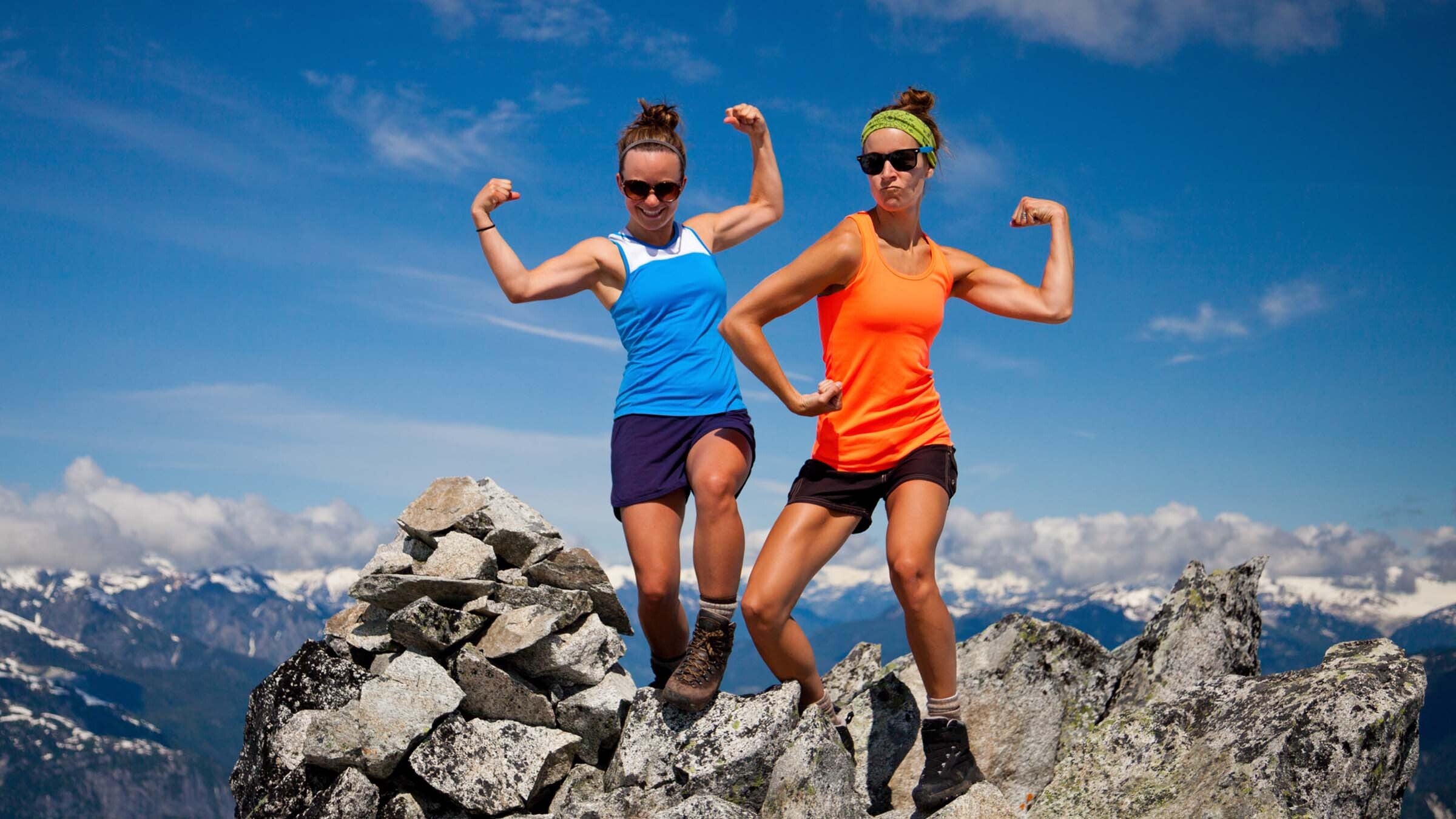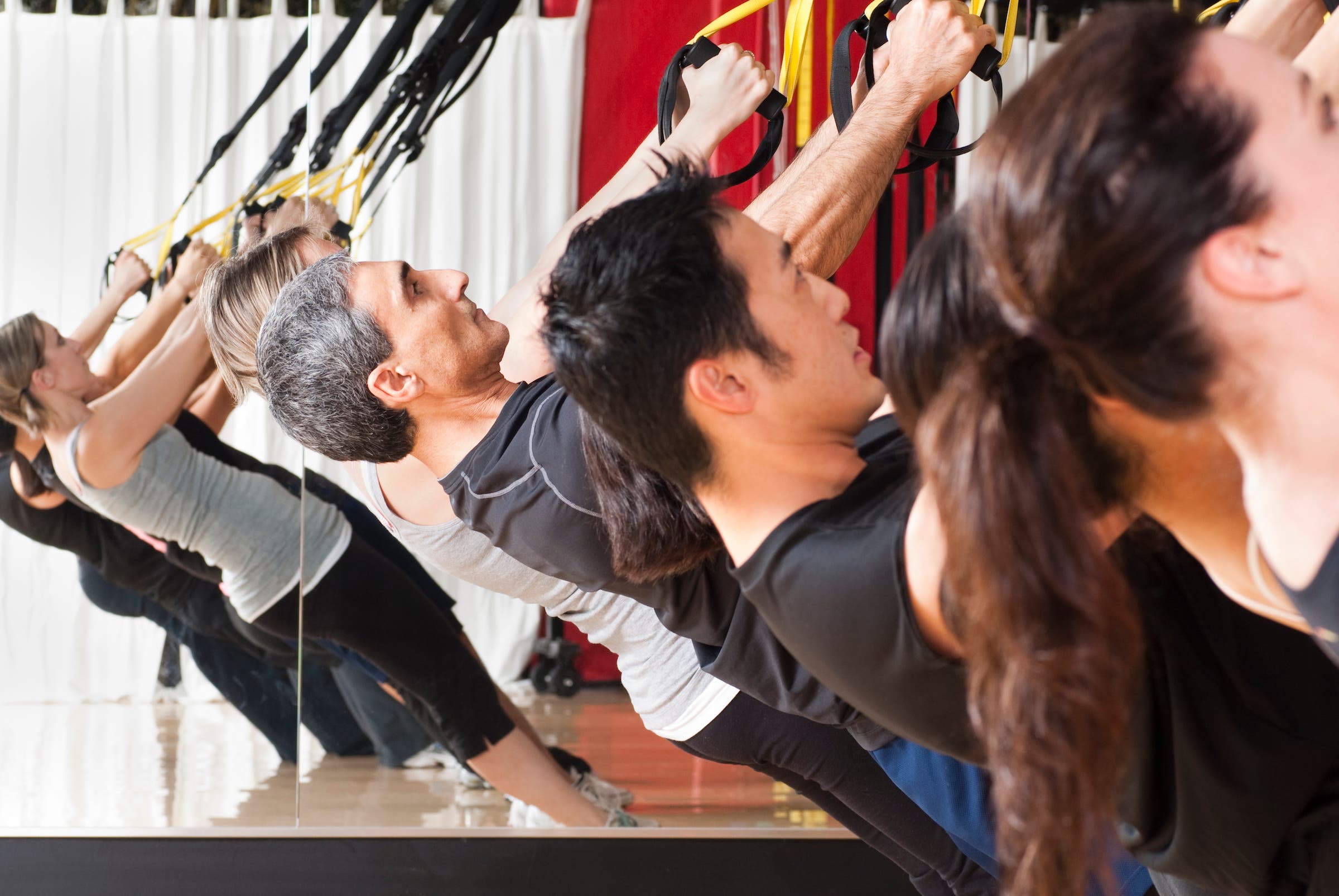Yes, Hikers Need Strong Upper Bodies. These Exercises Can Help

Most backpackers prioritize training the legs for upcoming adventures, and rightfully so. However, hikers shouldn’t neglect exercises for the upper body: Strong arms, shoulders, and back muscles help improve posture, which can reduce tension headaches and shoulder aches from carrying a heavy load. Perform this simple upper-body workout to boost your strength and avoid bothersome upper-body pain on the trail.
Perform each set below, alternating between both exercises for three rounds of 12 repetitions before moving to the next set. Also, make sure your dumbbells are an appropriate weight to maintain good form.
Set 1
Incline Push-Up
With straight arms, place your hands on a workout bench shoulder-width apart and walk your feet backward until you are in a push-up position. Lower until your chest touches the edge of the bench, then push yourself back to the starting position. If a workout bench is too challenging, try using a countertop or table.
TRX Rows
Grab the handles of the suspension trainer (a set of exercise rings work, too) and take a big step backward, around 3 feet. Keeping feet shoulder-width apart, legs straight, and core tight, lean back with control until your arms are straight. Without shrugging your shoulders, pull yourself upright toward the handles. Slowly straighten your arms to return to the start position. Adjust the difficulty by moving your feet closer to the anchor point to make it harder and farther away to make it easier.

Set 2
Incline Dumbbell Bench Press
This variation of the traditional bench press uses an incline bench instead of a flat bench. Use a neutral grip (palms facing each other) to help reduce strain on the shoulders.
Set the backrest of an adjustable bench at a 30-degree angle. Lying back, bring the weights up to your shoulders with your palms facing one another. Squeeze your shoulder blades together without shrugging and keep them squeezed as you press the weights up until your arms are straight. Under control, lower the weights back to your shoulders.
Single-Arm Rows
Stand to the left of a flat workout bench and place your right knee on it directly below your right hip. Place your right hand on the bench below your shoulder; your torso should be facing the floor but slightly upright. Widen your base of support by bringing your left leg out and back so your left foot is planted on the floor about 12 inches from the bench. With the dumbbell placed on the floor directly beneath your left shoulder, grasp the weight with a straight left arm. Pull up and back with your elbow to row the weight up near your waist—your upper arm should be parallel with the floor at the top of the movement and your wrist near your waist. Avoid shrugging during the row or letting your elbow flare outward. Lower the weight back to the start position with control.
Set 3
Overhead Press
Stand tall with your feet shoulder-width apart and with dumbbells resting on your shoulders, palms facing each other. Before pressing the weights overhead, tighten your core and glutes to help avoid arching your back. Press the weights overhead with your palms facing each other until your elbows are straight—don’t lean back as you do this. Lower the weights back down to your shoulders with control, keeping your core and glutes engaged.
Band Pull-Downs
Attach a thick exercise band to a pull-up bar. Grab the band and sit on the floor with your legs straight so your feet line up under the pull-up bar. Using a shoulder-width grip, grab the band with both hands, palms facing down. Using your back and shoulder muscles, pull the band down to your chest without shrugging. Slowly extend your arms to return to the start position.